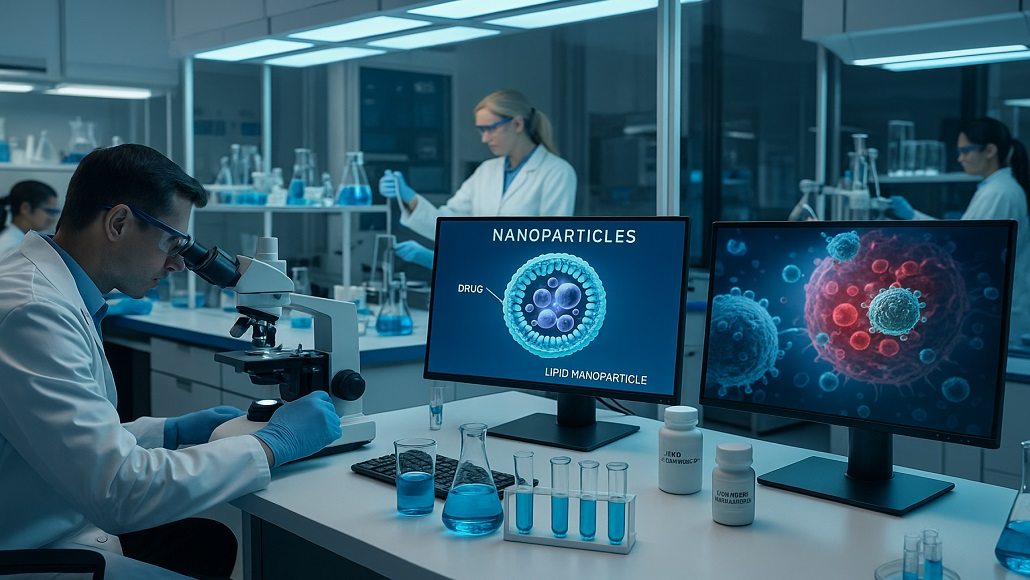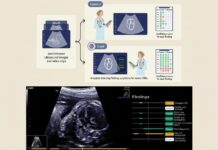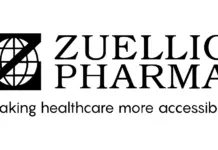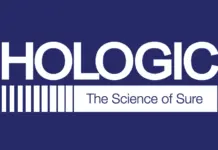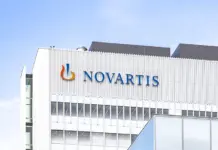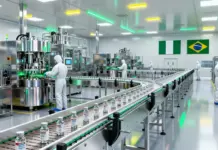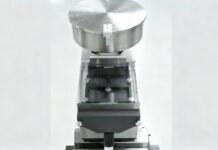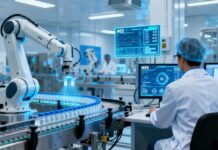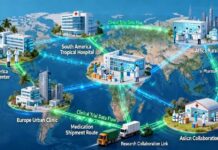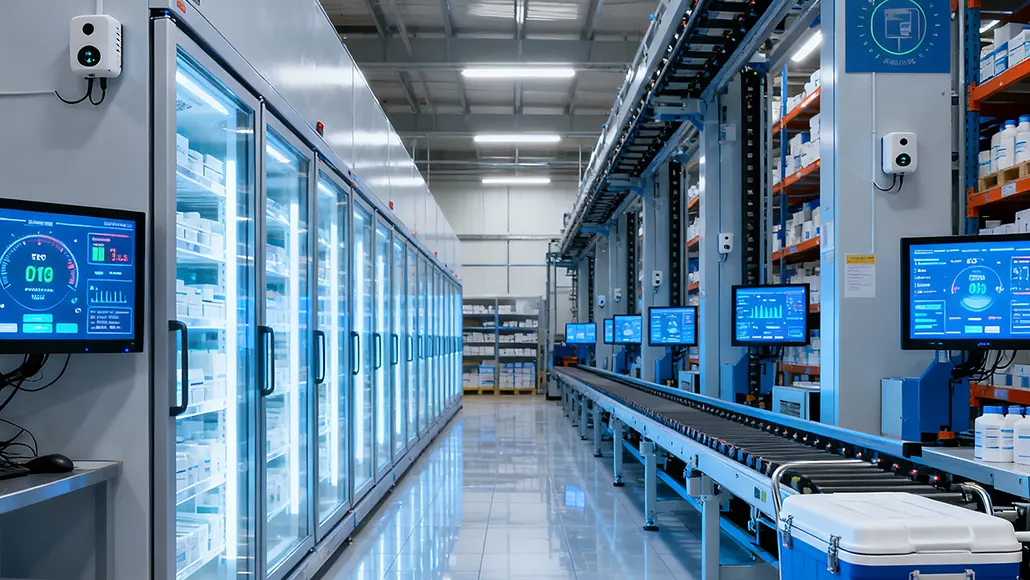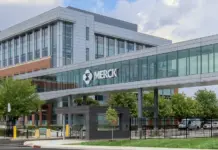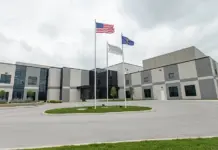Regenerative Medicine and Cell Therapy: Emerging Frontiers in Biotech
The field of regenerative medicine represents one of the most transformative frontiers in modern biotechnology, promising to fundamentally reshape how medicine approaches tissue damage, organ failure, and degenerative diseases. At its core, regenerative medicine aims to repair, replace, or regenerate damaged cells, tissues, and organs rather than merely treating symptoms or managing chronic conditions. Cell therapy, a critical component of this broader field, harnesses the remarkable properties of stem cells and other therapeutic cells to restore normal function to diseased or damaged biological systems. As the global stem cell therapy market expands from USD 16.04 billion in 2024 toward a projected USD 54.45 billion by 2034, reflecting the field’s explosive growth trajectory, regenerative medicine is transitioning from laboratory curiosity to clinical reality with profound implications for healthcare systems, biotechnology investment, and patient outcomes worldwide.
The investment landscape surrounding cell therapy and regenerative medicine reflects both the field’s tremendous promise and the significant challenges that must be overcome to realize its full potential. Following several challenging years marked by capital constraints and elevated risk aversion, the cell and gene therapy sector experienced renewed investment momentum in 2024, with funding reaching USD 15.2 billion and representing a 30 percent increase compared to the previous year. This resurgence signals growing investor confidence in the field’s commercial viability as regulatory approvals accumulate, manufacturing processes mature, and clinical evidence demonstrates therapeutic value across diverse disease areas. However, investment remains concentrated in later-stage companies with advanced clinical programs and demonstrated proof-of-concept, creating a bifurcated funding environment where well-established programs attract substantial capital while early-stage platforms struggle to secure resources.
The Scientific Foundation of Stem Cell Therapies
Stem cells possess two defining characteristics that distinguish them from other cell types and underpin their therapeutic potential. First, they demonstrate the capacity for self-renewal, meaning they can divide and create additional stem cells indefinitely under appropriate conditions. Second, they exhibit the ability to differentiate into specialized cell types with specific functions, enabling them to generate the diverse cell populations that comprise tissues and organs. These properties create the foundational capability for regenerative therapies, as stem cells can theoretically provide unlimited supplies of specialized cells for transplantation or tissue repair.
Different stem cell types offer distinct advantages and limitations for therapeutic applications. Embryonic stem cells, derived from early-stage embryos, possess pluripotency, meaning they can differentiate into virtually any cell type in the body. This versatility makes them powerful research tools and potential therapeutic agents, but their use raises ethical concerns related to embryo destruction that have limited their clinical application in some jurisdictions. Adult stem cells, found in various tissues throughout the body, demonstrate more limited differentiation potential but avoid the ethical controversies associated with embryonic sources. Hematopoietic stem cells from bone marrow have supported successful transplantation therapies for blood disorders for decades, proving that stem cell therapies can deliver transformative clinical value.
Induced pluripotent stem cells represent a landmark innovation that combines the pluripotency of embryonic stem cells with the ethical acceptability of adult cell sources. These cells are created by reprogramming adult cells through introduction of specific genes that restore pluripotent characteristics. The ability to generate patient-specific pluripotent stem cells creates opportunities for autologous therapies where cells derived from patients themselves are modified and returned, eliminating immune rejection concerns that complicate allogeneic approaches using cells from donors. Induced pluripotent stem cells also enable disease modeling and drug screening using cells that carry patient-specific genetic backgrounds, accelerating development of personalized therapies.
Mesenchymal stem cells have emerged as particularly promising therapeutic agents due to their immunomodulatory properties, ease of isolation from multiple tissue sources including bone marrow and adipose tissue, and favorable safety profiles demonstrated across numerous clinical trials. These cells can differentiate into bone, cartilage, and fat cells, making them valuable for orthopedic and reconstructive applications. However, their therapeutic effects often stem more from secreted factors that modulate inflammation and promote tissue repair than from direct differentiation into functional tissue. This paracrine mechanism of action has important implications for manufacturing, dosing, and clinical application of mesenchymal stem cell therapies.
Clinical Applications Across Disease Categories
Regenerative medicine and cell therapy approaches have demonstrated therapeutic potential across an extraordinarily diverse range of medical conditions, from common chronic diseases to rare genetic disorders. Cardiovascular disease represents a major focus area, as heart muscle damaged by myocardial infarction has limited capacity for self-repair, often leading to progressive heart failure. Stem cell therapies aim to regenerate damaged heart tissue by delivering cells capable of differentiating into cardiomyocytes or secreting factors that promote angiogenesis and reduce scarring. Clinical trials have explored multiple cell types including mesenchymal stem cells, cardiac progenitor cells, and induced pluripotent stem cell-derived cardiomyocytes, with varying degrees of success. While dramatic regeneration of infarcted myocardium remains elusive, accumulated evidence suggests that cell therapies can improve cardiac function and reduce adverse cardiac remodeling in appropriately selected patients.
Neurodegenerative diseases including Parkinson’s disease, Alzheimer’s disease, and amyotrophic lateral sclerosis present particularly compelling rationales for regenerative approaches, as progressive loss of neurons drives clinical deterioration without effective disease-modifying treatments in conventional pharmacology. Cell replacement strategies aim to restore lost neuronal populations, with clinical trials exploring transplantation of dopaminergic neurons derived from stem cells to replace the specific neuronal population lost in Parkinson’s disease. Beyond cell replacement, stem cell therapies may provide neuroprotective effects through secretion of trophic factors that support survival of remaining neurons and modulate neuroinflammation. The complexity of neural circuitry and the brain’s limited regenerative capacity create substantial technical challenges, but early clinical evidence demonstrates that cell therapies can improve motor function in Parkinson’s patients, validating continued development efforts.
Orthopedic applications leveraging stem cells’ capacity to differentiate into bone, cartilage, and connective tissue have progressed rapidly from research concepts to clinical practice in some jurisdictions. Mesenchymal stem cell therapies for osteoarthritis aim to regenerate damaged cartilage, reduce inflammation, and alleviate pain without the complications associated with long-term anti-inflammatory medication use or the morbidity of joint replacement surgery. While outcomes remain variable and optimal treatment protocols continue to evolve, the minimal invasiveness of cell therapy approaches and their favorable safety profiles have driven substantial patient and physician interest. Similar approaches target tendon and ligament injuries, intervertebral disc degeneration, and bone healing, with clinical evidence supporting therapeutic value in selected applications.
Immune system disorders and autoimmune conditions represent another major application domain for cell therapies, particularly approaches involving regulatory T cells or mesenchymal stem cells with immunomodulatory properties. Graft-versus-host disease, a potentially life-threatening complication of hematopoietic stem cell transplantation where donor immune cells attack recipient tissues, has proven responsive to mesenchymal stem cell treatment in multiple clinical trials. The first FDA-approved mesenchymal stem cell therapy specifically targets pediatric graft-versus-host disease, validating this therapeutic approach. Broader applications in inflammatory bowel disease, multiple sclerosis, and systemic lupus erythematosus are under investigation, with early results suggesting potential therapeutic benefits from anti-inflammatory and immunomodulatory effects of administered cells.
Manufacturing Challenges and Innovations
The translation of cell therapy concepts from laboratory research to commercial-scale therapeutics requires addressing formidable manufacturing challenges unique to living therapeutic products. Unlike traditional small molecule drugs that can be synthesized through well-controlled chemical processes with consistent product quality, cell therapies involve complex biological manufacturing where living cells serve as both production machinery and final product. This biological complexity creates substantial technical challenges related to cell sourcing, expansion, differentiation, quality control, and formulation for administration to patients.
Autologous cell therapy manufacturing, where cells are collected from individual patients, processed or modified, and returned to the same patients, presents particularly daunting logistical complexities. Each manufacturing run produces a single patient dose, eliminating economies of scale that typically reduce production costs in pharmaceutical manufacturing. The need to maintain cell identity throughout collection, processing, and return to patients requires rigorous tracking systems and chain-of-custody documentation. Time pressures can be intense, particularly for cancer therapies where delays in treatment initiation may allow disease progression. The individualized nature of autologous manufacturing has contributed to extraordinarily high costs for approved CAR-T cell therapies, often exceeding USD 300,000 per patient and limiting accessibility despite demonstrated therapeutic value.
Allogeneic cell therapy approaches using cells from healthy donors for treatment of multiple patients offer potential advantages including economies of scale, off-the-shelf availability, and reduced time between treatment decision and administration. However, allogeneic approaches must overcome immune rejection risks that could limit therapeutic efficacy or cause adverse effects. Immune engineering approaches that modify donor cells to evade immune recognition show promise for enabling universal donor cells suitable for any recipient. The development of master cell banks from carefully characterized donor cells or induced pluripotent stem cell lines enables production of large numbers of therapeutic doses from single starting materials, dramatically improving manufacturing economics compared to autologous approaches.
Process automation and closed-system bioreactors represent critical innovations for improving manufacturing efficiency, reducing contamination risks, and enabling scalability of cell therapy production. Automated cell processing systems can perform complex multi-step procedures including cell selection, activation, genetic modification, and expansion in controlled environments with minimal manual intervention. These systems improve consistency between production runs, reduce operator-dependent variability, and free highly skilled personnel from routine manual tasks. The integration of in-process monitoring and real-time quality assessment enables early detection of process deviations before substantial resources are invested in batches that may not meet specifications. As manufacturing technologies mature and production volumes increase, costs per dose decline substantially, improving economic viability and expanding patient access.
Regulatory Pathways and Clinical Development
The regulatory frameworks governing cell and gene therapies continue to evolve as agencies worldwide develop expertise in evaluating these novel therapeutic modalities and balance the imperative to ensure patient safety with the desire to facilitate access to potentially transformative treatments. The FDA’s designation of regenerative medicine advanced therapy status provides expedited development and review pathways for therapies addressing serious conditions with unmet medical needs. This designation enables early interactions with FDA reviewers, potential eligibility for accelerated approval and priority review, and rolling submission of application modules as data becomes available rather than requiring completion of entire applications before review begins.
The complexity of manufacturing cell therapies creates unique regulatory considerations compared to traditional pharmaceuticals. Regulatory agencies require comprehensive characterization of starting materials, detailed descriptions of manufacturing processes, validation that processes consistently produce quality products, and robust testing of final products to ensure identity, purity, potency, and safety. For autologous therapies where manufacturing occurs on a patient-by-patient basis, demonstrating manufacturing consistency presents particular challenges. Process validation approaches developed for traditional batch manufacturing may not directly translate to individualized manufacturing paradigms, requiring development of alternative validation strategies appropriate for cell therapy production.
Clinical trial design for cell therapies must account for several unique factors including potential long-term persistence of administered cells, delayed onset of therapeutic effects as cells engraft and differentiate, and challenges in implementing blinded placebo controls when invasive procedures are required for cell administration. Surrogate endpoints and biomarkers that correlate with long-term clinical outcomes enable more efficient clinical trials but require validation before regulatory acceptance. The rarity of some diseases amenable to cell therapy approaches creates challenges in enrolling adequately powered clinical trials, sometimes necessitating single-arm study designs that compare outcomes to historical controls rather than randomized concurrent controls.
Long-term follow-up of patients receiving cell therapies addresses potential delayed adverse effects including malignant transformation, ectopic tissue formation, or immune reactions. Regulatory requirements typically mandate follow-up for multiple years after treatment, creating substantial ongoing obligations for manufacturers and clinical sites. Registry approaches that aggregate data across multiple clinical trials and commercial use enable detection of rare adverse events that might not be apparent in individual studies. The balance between ensuring adequate safety monitoring and avoiding excessive burden that could impede clinical development remains an area of ongoing dialogue between industry and regulators.
Investment Dynamics and Commercial Considerations
The cell and gene therapy investment landscape reflects the field’s maturation from purely research-focused activities toward commercial-stage operations with approved products generating revenue. The concentration of approximately 3,000 developers and over 2,000 clinical trials globally creates a highly competitive environment where companies must differentiate their technological approaches, target indications, and clinical development strategies to attract investment and partnership interest. The presence of approximately 13 of the 15 largest pharmaceutical companies by market capitalization in cell and gene therapy development signals mainstream acceptance of these modalities as important components of future therapeutic portfolios rather than niche technologies.
Partnerships between cell therapy developers and large pharmaceutical companies have become increasingly common as both parties seek complementary capabilities. Smaller biotechnology companies typically possess innovative technology platforms and deep scientific expertise but lack the capital, clinical development capabilities, and commercial infrastructure required to bring therapies to market independently. Large pharmaceutical companies can provide financial resources, clinical development expertise, regulatory capabilities, and commercial infrastructure while gaining access to cutting-edge technologies and diversifying their development pipelines. These partnerships often involve upfront payments, research funding, development milestone payments, and royalties on eventual product sales, creating value for both parties while sharing development risks.
The emergence of contract development and manufacturing organizations specializing in cell and gene therapies addresses a critical need for manufacturing capacity and expertise that most therapy developers cannot economically build internally. These specialized service providers offer capabilities ranging from process development and manufacturing scale-up through commercial production, enabling therapy developers to focus on research and clinical development while outsourcing manufacturing activities. Strategic partnerships with leading contract manufacturers provide therapy developers access to state-of-the-art facilities and experienced personnel while potentially reducing capital requirements and execution risks associated with building proprietary manufacturing facilities.
Market access and reimbursement represent critical challenges for cell therapies given their high upfront costs despite potential for durable therapeutic benefits. Payers accustomed to ongoing treatment costs for chronic disease management must adapt to one-time treatments with substantial initial expenses but potentially reduced long-term healthcare utilization. Outcomes-based payment models where manufacturers receive payment tied to demonstration of therapeutic benefit represent one approach to aligning manufacturer and payer incentives while managing financial risk. However, implementation of outcomes-based agreements requires developing outcome measures, establishing data collection systems, and creating administrative processes for adjusting payments based on patient outcomes. The complexity of these arrangements has limited their adoption despite conceptual appeal.
Regional Developments in the Middle East
The Middle East’s growing interest in regenerative medicine and cell therapy reflects broader healthcare modernization efforts and recognition of these technologies’ potential to address regional health challenges. Investment in genomics programs, precision medicine initiatives, and biotechnology infrastructure creates foundation capabilities that support cell therapy development and clinical application. The region’s emphasis on becoming a healthcare destination combining clinical excellence with cutting-edge technology positions regenerative medicine as a differentiating capability that attracts international patients while serving regional populations.
Regulatory frameworks in Gulf states are evolving to address cell and gene therapies’ unique characteristics while facilitating their clinical application. The implementation of fast-track approval pathways for innovative therapies including advanced biologics signals regulatory sophistication and commitment to enabling patient access to cutting-edge treatments. Harmonization of regulatory standards with international frameworks such as those established by the European Medicines Agency and FDA facilitates recognition of clinical data generated globally while supporting development of regional clinical trial capabilities. These regulatory developments position the Middle East as an attractive location for multinational cell therapy developers seeking to expand global access to their products.
Academic medical centers and research institutions throughout the region are establishing cell therapy programs that combine clinical application with translational research. These programs develop local expertise in cell processing, quality control, and clinical administration while conducting research on applications particularly relevant to regional patient populations. Genetic diseases with elevated prevalence in Middle Eastern populations due to consanguinity represent potential target indications where regional cell therapy development could address significant unmet medical needs. The integration of genomic data from national genome programs with cell therapy development creates opportunities for developing personalized regenerative approaches tailored to regional genetic backgrounds.
International collaborations connecting Middle Eastern institutions with established cell therapy centers enable knowledge transfer and accelerate capability building. Research partnerships provide access to advanced technologies and training opportunities while generating scientific publications and intellectual property. Clinical trial collaborations enable regional patients to access investigational therapies while contributing data to support regulatory approvals. These collaborative arrangements accelerate the Middle East’s progression from cell therapy consumer to active contributor in the field’s advancement, creating sustainable capabilities that persist beyond individual projects and position the region for long-term participation in regenerative medicine innovation.





